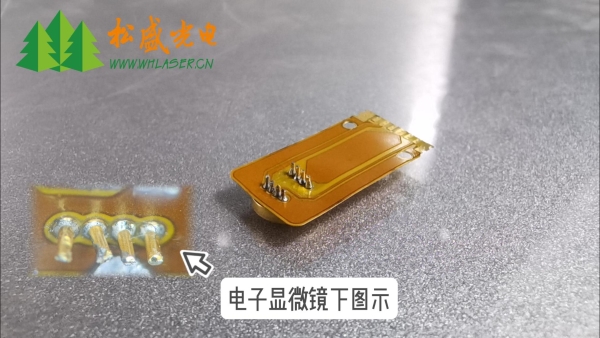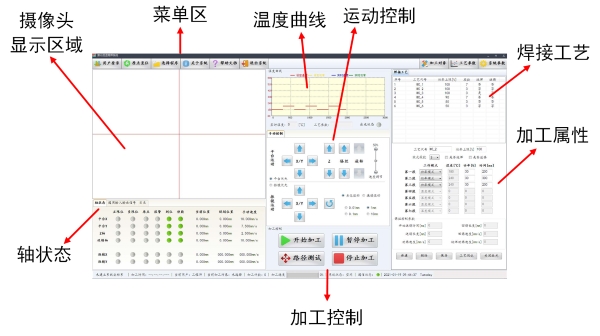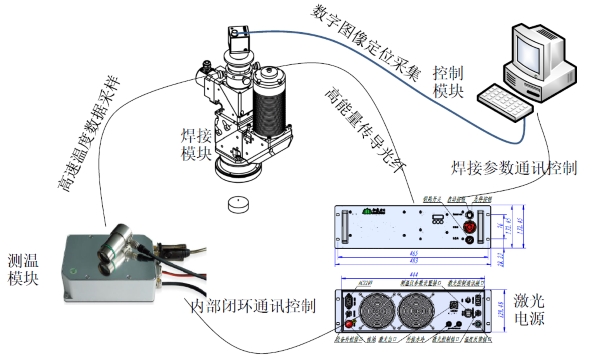How to Control Weld Seam Precision in Laser Soldering Processes
The control of welding seam precision determines welding quality. Precision control of weld seam accuracy is key to ensuring both welding quality and production yield. So, how can we control weld seam precision? During the welding process, multiple factors affect seam accuracy, including laser spot size, power, speed, and material selection. Let Songsheng Optoelectronics provide a detailed explanation.

Post-Soldering Illustration of 8 Solder Joints on FPC Flexible Board Switch Connector
Equipment and Parameter Adjustment
The adjustment of laser spot size directly affects the welding area. A smaller spot enables finer welding, making it suitable for micro solder joints and high-precision weld seams. For instance, in microelectronic packaging, the spot diameter can be controlled to tens of micrometers or smaller using an optical focusing system, allowing precise melting of solder onto tiny pins or pads. The spot size can be adjusted by modifying parameters such as the focal length of the laser focusing lens, depending on the dimensions and precision requirements of the workpiece.
Precise laser power control is critical for ensuring weld seam accuracy. Excessive power may cause solder overmelting, splashing, or even damage to components, while insufficient power prevents proper solder melting, leading to cold joints. A power feedback control system can monitor and adjust laser power in real time. For example, advanced laser soldering equipment employs closed-loop power control technology, dynamically adjusting output power based on signals such as reflected light intensity during welding to maintain optimal solder melting conditions.

4/6-Axis Synchronized Constant-Temperature Laser Soldering Software Illustration
The adjustment of welding speed significantly influences the melting and solidification process of solder. An appropriate welding speed ensures uniform solder distribution along the weld seam, resulting in precise joints. Excessive speed may prevent complete solder melting, leading to discontinuous seams, while insufficient speed can cause overheating, adversely affecting seam morphology and quality. Optimal welding speed is determined through experimental validation and empirical analysis, considering material properties and joint dimensions. For instance, slower speeds are typically employed for thicker solder materials or larger joints to ensure proper fusion.
Welding Materials and Workpiece Preparation
The selection of suitable solder materials is critical for achieving dimensional accuracy in weld seams. Solder wires or pastes with varying compositions exhibit distinct melting points and flow characteristics. For example, high-tin-content solders generally feature lower melting temperatures and superior fluidity, enabling enhanced controllability during laser welding and more precise seam filling. Additionally, dimensional precision of solder materials—such as the diameter tolerance of solder wires—directly affects material deposition rates and resultant joint dimensions.
Workpiece surface preparation necessitates cleanliness and flatness to ensure optimal results. Contaminants including oils, oxidation layers, or particulate matter can compromise solder wettability and bonding integrity, ultimately degrading seam accuracy. Pre-welding surface treatments such as chemical cleaning or mechanical abrasion are routinely employed. Metallic workpieces, for instance, may undergo degreasing with organic solvents followed by light abrasive polishing to remove oxidation, thereby promoting robust solder adhesion and improved seam precision.
Positioning and Monitoring During Welding Process
High-precision positioning systems are employed to ensure the laser beam accurately focuses on the weld seam. Common systems include vision-based positioning, where cameras capture workpiece images and image recognition algorithms determine welding locations. For instance, in PCB (printed circuit board) soldering, vision systems can precisely identify pad positions with errors controlled within micrometers to tens of micrometers, guiding the laser beam for pinpoint-accurate welding.

Songsheng's Closed-Loop Temperature-Controlled Laser Soldering System Illustration
Real-time monitoring and feedback utilize equipment like infrared thermal imagers to track temperature distribution across the welding zone. Analyzing temperature variations allows assessment of solder melting status and weld seam quality. If abnormal temperatures or non-compliant seam geometries are detected, the system immediately adjusts parameters—for example, automatically reducing laser power or increasing speed when excessive temperature risks solder splatter—to maintain seam precision.
Numerous factors influence weld seam accuracy, and ensuring precision at every stage elevates both quality and production yield. With years of expertise in laser welding, Songsheng Optoelectronics delivers tailored solutions and equipment, meticulously refined for each process step to empower partners in achieving greater value creation.
Contact: Mr.Xiao
Phone: +86-13385280662
E-mail: market001@whlaser.cn
Add: Room 02, Floor 5, Building 9, Gezhouba Sun City, No. 40, Gaoxin 4th Road, Donghu New Technology Development Zone, Wuhan